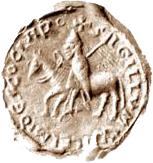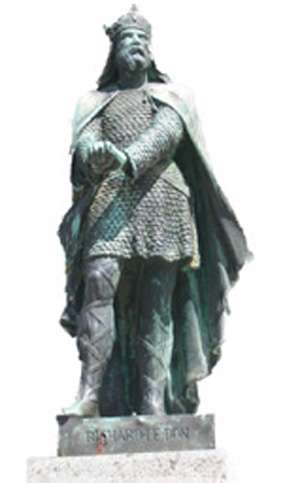Normandy
Historians of the early years of Normandy are still debating whether the first Vikings who settled near Caen were from Denmark or, as many believe, from Norway. If the latter, then Rollo, the first duke of Normandy was the son of Rogenvald, count of Maere and Raundahl in Norway, and prince of Orkney.
Rollo married twice and the second time was to Popee, the daughter of the count of Bayeux. Their son, William Long-Sword, was the second duke of Normandy and died in 948. Richard I was his son, the third duke, and his son was Richard II, the fourth duke. The fifth duke was Richard III, who died in 1027, and he was followed by his brother Robert (le Diable), the sixth duke, who died in 1035. According to succession, Mauger (le Jeune), the third brother, should have become the seventh duke. Robert, however, had a natural son by Arlette de Vertpre, called ‘William the Bastard’ and later, Conqueror of England.
Mauger became archbishop of Rouen after the death of an uncle, and through his father was responsible for the government of Saint-Lo. This region included a castle and church at Saint-Clair, now known as Saint-Clair-sur-l’Elle. Mauger became the count of Saint-Clair and married a daughter of the house of Crevecoeur-en-Auge. They had three sons: the first was Hamon (aux Dents) who would have been the eighth duke if William had not succeeded by force. Their second son was Walderne de Saint-Clair and the third was Hubert, baron of Rie. Both Hamon and Walderne were said to have been killed fighting William at the battle of Val-es-Dunes in 1047.

